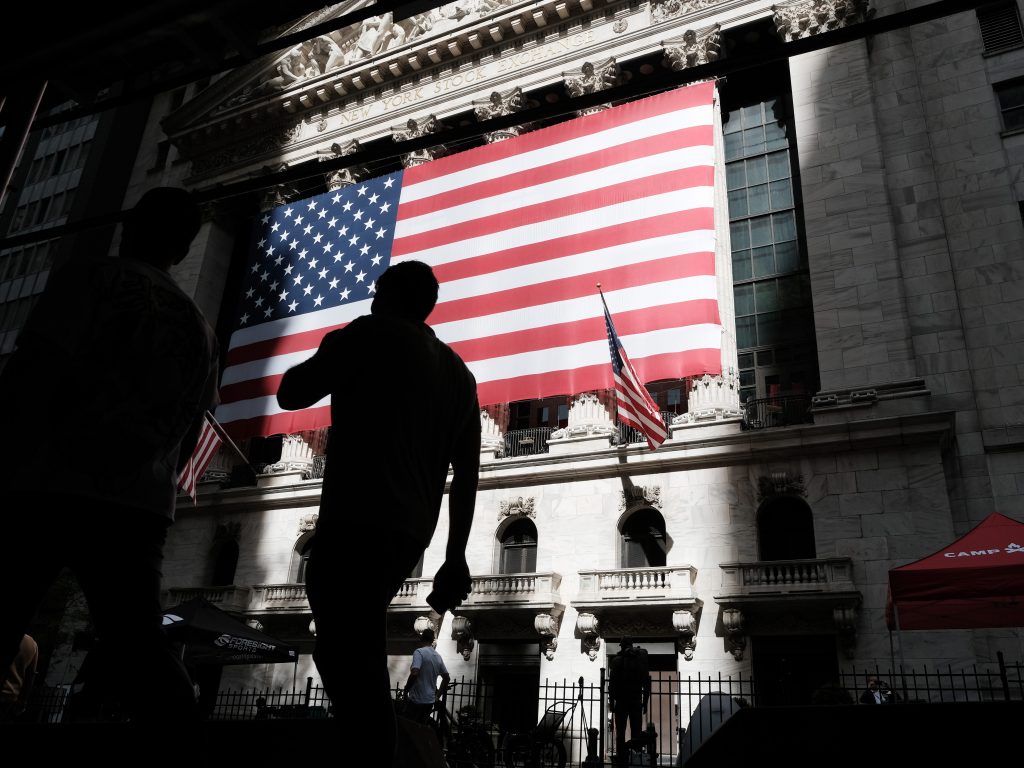- Bonds are turning into a better alternative to stocks in the current market, one strategist said.
- It comes as the Federal Reserve raises the benchmark interest rate to ward off red-hot inflation.
- In past bear markets however, interest rates have fallen, which has depressed bond yields, making them less attractive.
Bear markets in US stocks are rare, but the current one is more unusual still. Aggressive interest rate hikes are changing the market's dynamic with bonds, according to strategist Melissa Brown.
Brown, who specializes in market risk at financial intelligence firm Qontigo, told Insider that in today's market, bonds are becoming an increasingly attractive alternative to stocks. In past bearish environments, bonds have typically become progressively less attractive as an alternative to equities.
That's because the Federal Reserve is trying to cool rampant inflation running across the economy with a string of big interest rate hikes, starting with a 75-basis-point hike in May.
"What's really different this time, since the peak of the market, rates have doubled," Brown said. "That is a huge difference and it is running counter to policy solutions that we've seen prior bear markets so it makes it tougher to make the case for equities."
The yield on the benchmark 10-year Treasury note has doubled over the course of 2022 to around 3%, close to its highest in a decade, while the S&P 500 index has fallen by around 19%, putting it in range of the technical definition of a bear market.
A bear market is defined as a prolonged period of declining stock prices and usually involves a 20% fall from a previous high.
Worries about the US economy tumbling into a recession have dampened investor confidence, only to be recently exacerbated by Fed Chair Jerome Powell who suggested an economic downturn is not intended, but could certainly be a possibility.
Against that backdrop, yields on the 10-year US Treasury note would ordinarily have fallen, as economic uncertainty tends to attract risk-averse investors. Bond prices and yields move inversely to one another.
However, because the Fed's main tool to tackle inflation is to raise interest rates, bonds have suffered along with stocks, as inflation erodes the purchasing power of fixed-income returns. But this has left bonds looking like more of an attractive bet for yield-hungry investors.
The dividend yield on the S&P 500 is running at around 1.65% right now, a little over half the yield on the 10-year US Treasury, according to Bloomberg data.
That said, there is a difference between this bear market and previous ones. Unlike in 2000, after the dotcom bubble burst, or 2008, when the subprime crisis erupted, the Fed is raising interest rates this time, not cutting them.
When central banks cut interest rates, it makes company financing cheaper, it makes stocks with better dividend yields look more attractive, it drives bond prices up and it encourages diversification, Brown said.
Now, with yields on US Treasuries rising, it's increasing investor appetite for fixed income.
"Bonds are becoming a better alternative to stocks than they've been for a long time, in comparison to other bear markets where bond yields have actually come down throughout the course of a bear market," Brown said.
The gap between the yield on the 10-year Treasury and the S&P 500 dividend yield is close to its widest in a decade, according to Bloomberg data.
She added: "If bond yields are 3.4% or 4%, all of a sudden they're looking attractive, whereas in these prior bear markets, they were getting less and less attractive, although albeit, from higher levels. Rates came down a lot in both 2000 and 2007, but they were higher than they were now but they were coming down, not going up."
Meanwhile, investors are increasingly buying stocks that offer lower volatility, as well as better value and profitability, a sign that they are cautious about the outlook of the US economy and that's bad news for the stock market, Brown said.
"There's a need to see sentiment pick up, for investors to get a little less risk-averse, to really start to see the market turnaround," she said.
